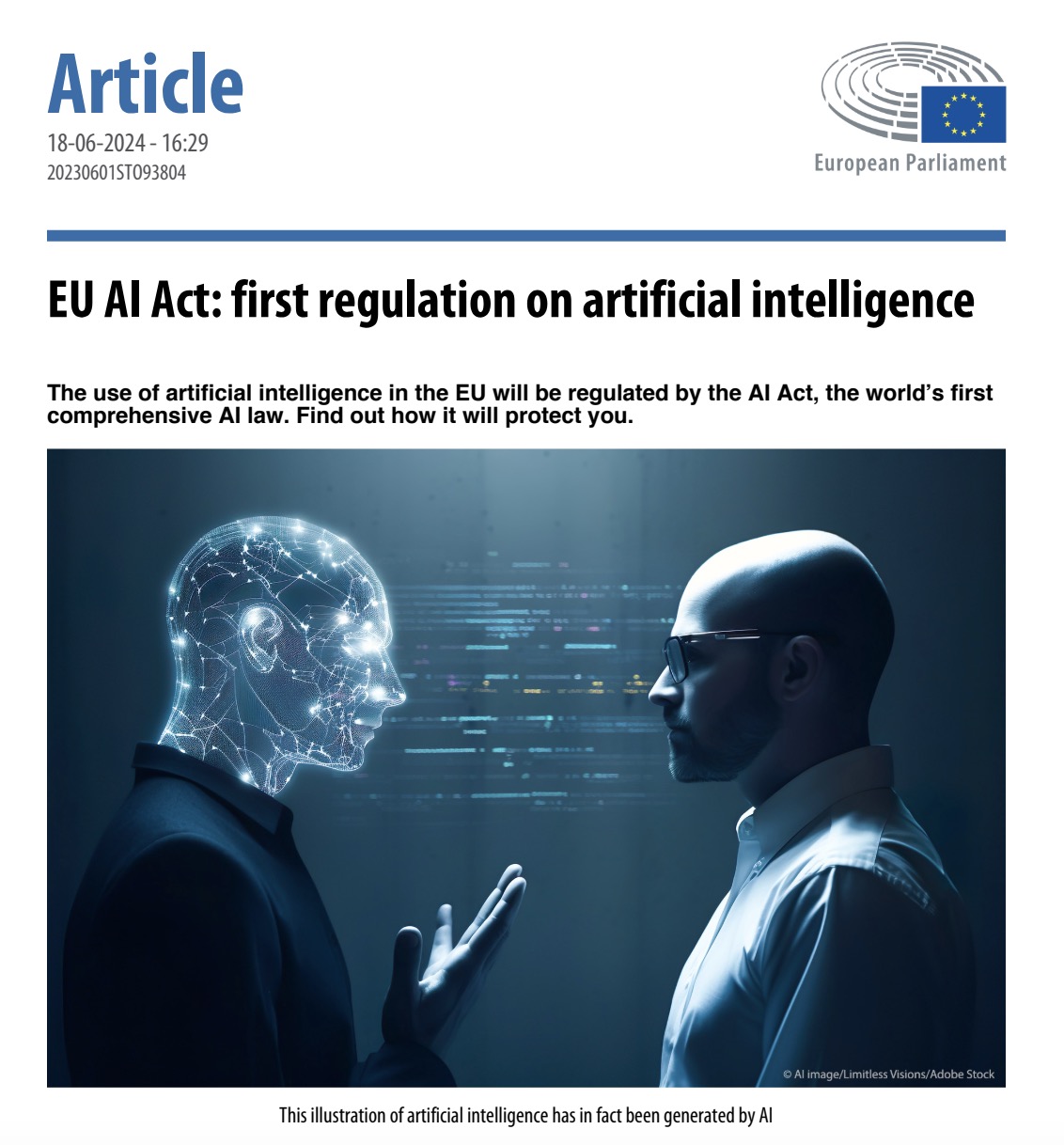The EU AI Act and Financial Crime Prevention: A Comprehensive Overview
Written by: Marco Beranzoni, Michael Borrelli and Sean Musch.
Introduction
What We Are Covering In This Post
Overview of the EU AI Act
High-Risk AI Systems in Financial Crime Prevention
Risk Management
Data Governance
Transparency and Documentation
Compliance Requirements for Financial Institutions
Conclusions
Overview of the EU AI Act
The EU AI Act categorizes AI systems by risk levels and, therefore, imposes corresponding obligations.
High-risk AI systems, which include those used in financial crime prevention, are subject to stringent requirements to ensure their safety, reliability, and ethical use. Moreover, the Act aims to foster innovation while protecting fundamental rights and promoting transparency in AI operations. Additionally, the Act emphasizes human-centric AI, aligning with the EU’s commitment to societal benefits from AI. Furthermore, it emphasizes the need for continuous monitoring and adaptation of AI systems to keep pace with technological developments and emerging risks.
High-Risk AI Systems in Financial Crime Prevention
AI systems for AML and fraud detection are classified as high-risk under the EU AI Act.
This classification is due to their potential impact on individuals’ financial stability and the broader financial system. Consequently, high-risk AI systems must comply with strict requirements, including risk management, data governance, and transparency.
Moreover, these systems must also undergo rigorous testing and validation for efficacy and reliability. Furthermore, financial institutions are encouraged to collaborate with regulatory bodies to share insights and best practices, thereby fostering a more secure and efficient financial ecosystem.
Risk Management
Providers must implement strong risk management to identify and mitigate risks in high-risk AI systems. This includes techniques, procedures, and systematic actions for design, development, quality control, and quality assurance. Institutions must design and operate AI systems to minimize risks to individuals and the financial system.
Ongoing risk assessments and scenario analysis are needed to ensure AI systems’ resilience and robustness.
Data Governance
Ensuring the quality and integrity of data sets used in training AI systems is a critical requirement under the EU AI Act. Therefore, providers must implement appropriate data governance and management practices to ensure that data sets are relevant, representative, and free of errors. Moreover, accuracy and reliability of data are crucial in financial crime prevention. Additionally, institutions should invest in advanced data validation and cleansing techniques to enhance the quality of their data, thereby improving the performance and reliability of their AI systems. Furthermore, regular audits and updates to data governance frameworks are essential to maintain compliance and effectiveness.
Transparency and Documentation
High-risk AI systems must maintain detailed technical documentation to ensure transparency in their operations. This includes the methods and steps performed for the development of the AI system, design specifications, system architecture, and data requirements. Consequently, financial institutions must ensure that their AI systems are transparent and that their operations can be easily understood and audited by regulatory authorities. Moreover, clear documentation not only aids in regulatory compliance but also fosters trust among stakeholders by demonstrating a commitment to ethical AI practices and accountability.
Compliance Requirements for Financial Institutions
Financial institutions using high-risk AI systems for financial crime prevention must adhere to several key compliance requirements under the EU AI Act. These requirements are designed to ensure that AI systems are safe, reliable, and used ethically. Additionally, institutions must establish robust internal governance frameworks to oversee AI deployments, including designated roles and responsibilities for compliance monitoring and reporting.
Automated Logs
Providers of high-risk AI systems must keep automatically generated logs to the extent such logs are under their control. These logs must be kept for a period appropriate to the intended purpose of the high-risk AI system, of at least six months unless provided otherwise in applicable Union or national law. Consequently, financial institutions must maintain these logs as part of their documentation to demonstrate compliance with the Act. Additionally, regular review and analysis of these logs can provide valuable insights into system performance and potential areas for improvement, thereby supporting continuous enhancement of AI operations.
Human Oversight
The EU AI Act mandates the implementation of measures for effective human oversight to prevent or minimize risks to health, safety, or fundamental rights.
Financial institutions must ensure that their AI systems are subject to human oversight, with clear protocols for intervention in case of system malfunctions or ethical concerns.
This oversight should be complemented by ongoing training and development programs for personnel to stay updated on the latest regulatory requirements and technological advancements. Consequently, this ensures informed and effective oversight.
Market Surveillance
For high-risk AI systems placed on the market, put into service, or used by financial institutions regulated by Union financial services law, the market surveillance authority for the purposes of this Regulation shall be the relevant national authority responsible for the financial supervision of those institutions. This ensures that financial institutions are subject to rigorous oversight and that their AI systems comply with the Act’s requirements. Additionally, institutions should engage in proactive communication with regulatory bodies to stay informed about emerging regulatory trends and, consequently, ensure timely compliance with new requirements.
Impact on Financial Institutions
The EU AI Act will have a significant impact on financial institutions, requiring them to invest in compliance infrastructure and update their AI systems to meet the Act’s requirements. This includes ensuring transparency, reliability, and human oversight in their AI operations. Institutions must also foster a culture of compliance and ethical AI use, encouraging employees to prioritize regulatory adherence and ethical considerations in their daily operations.
Enhanced Trust and Credibility
By complying with the EU AI Act, financial institutions can enhance trust and credibility with their customers and stakeholders. The Act’s focus on transparency and ethical use of AI systems will help build public trust in AI technologies used in financial services. Transparent and ethical AI practices can also differentiate institutions in a competitive market, attracting customers who prioritize security and ethical standards.
Reduced Risk of Financial Crime
The stringent requirements for high-risk AI systems under the EU AI Act will help reduce the risk of financial crime. By ensuring that AI systems are designed and operated in a manner that minimizes risks, financial institutions can better detect and prevent financial crimes such as money laundering and fraud. Furthermore, leveraging advanced AI capabilities to identify emerging threats and suspicious activities can further strengthen the institution’s defense against financial crime.
Compliance Costs and Operational Challenges
While the EU AI Act offers significant benefits, it also presents challenges for financial institutions. Compliance with the Act’s requirements will involve substantial costs, including investments in compliance infrastructure, regular audits, and continuous monitoring and updating of AI systems. Financial institutions must be prepared to navigate these challenges to ensure compliance and maintain operational efficiency. Developing a strategic approach to compliance, including budget allocation and resource planning, can help mitigate these challenges and ensure successful implementation.
Future Outlook
The EU AI Act is expected to reshape the landscape of financial crime prevention by setting a global benchmark for AI regulation. Additionally, the Act’s focus on transparency, ethical use, and human oversight will drive innovation while ensuring that AI systems are used responsibly and ethically. Consequently, institutions that proactively adapt to these changes can gain a competitive advantage, positioning themselves as leaders in the ethical use of AI.


Global Influence
The EU AI Act is likely to influence global AI regulatory frameworks, encouraging other regions to adopt similar standards. Consequently, this will lead to more standardized and robust financial crime prevention measures worldwide, promoting international cooperation on AI standards and ensuring that AI technologies are developed and used responsibly. Additionally, institutions operating in multiple jurisdictions should monitor these global trends to ensure alignment with international regulatory standards.
Building Public Trust
The Act’s emphasis on transparency and ethical use of AI systems will help build public trust in AI technologies used in financial services. By ensuring that AI systems are safe, reliable, and subject to human oversight, the EU AI Act will foster a trustworthy AI ecosystem in the financial sector. Moreover, public trust is a critical component of long-term success in the financial industry. Consequently, institutions that prioritize transparency and ethical practices will be well-positioned to build and maintain this trust.


Conclusion
The EU AI Act represents a significant advancement in the regulation of AI technologies within the European Union. Its publication in the Official Journal of the European Union signifies the beginning of a new era of AI governance. For financial institutions, the Act presents both opportunities and challenges. By complying with the Act’s stringent requirements, financial institutions can enhance trust and credibility, reduce the risk of financial crime, and contribute to the development of trustworthy AI technologies. As the Act enters into force, financial institutions must take proactive steps to ensure compliance and navigate the evolving regulatory landscape. The EU AI Act is not just a regulatory challenge but also an opportunity for financial institutions to demonstrate their commitment to ethical AI practices and build a more secure and trustworthy financial system. Institutions should also engage in continuous learning and adaptation to stay ahead of regulatory changes and leverage AI innovations to enhance their operational efficiency and effectiveness.
If you found this post helpful, consider subscribing to my FinCrime Agent YouTube channel for more insights into Regulatory Compliance and Financial Crime.
You can also support our community through Patreon or show your appreciation with a Super Thanks on YouTube.
A special thank you goes to Michael Borrelli and Sean Musch from www.ai-and-partners.com for the help provided in co-writing this article.
To learn more about the EU AI Act, please visit the European Parliament page with the latest updates on this topic. EU AI Act: First Regulation on Artificial INtelligence
The content of this article was developed with the support of AI-based tools, which helped in drafting and refining the text based on initial concepts provided by the author.
Subscribe For Updates
FinCrime Agent
Empowering your financial crime prevention journey with clear, focused resources for a deeper understanding and practical applications.


